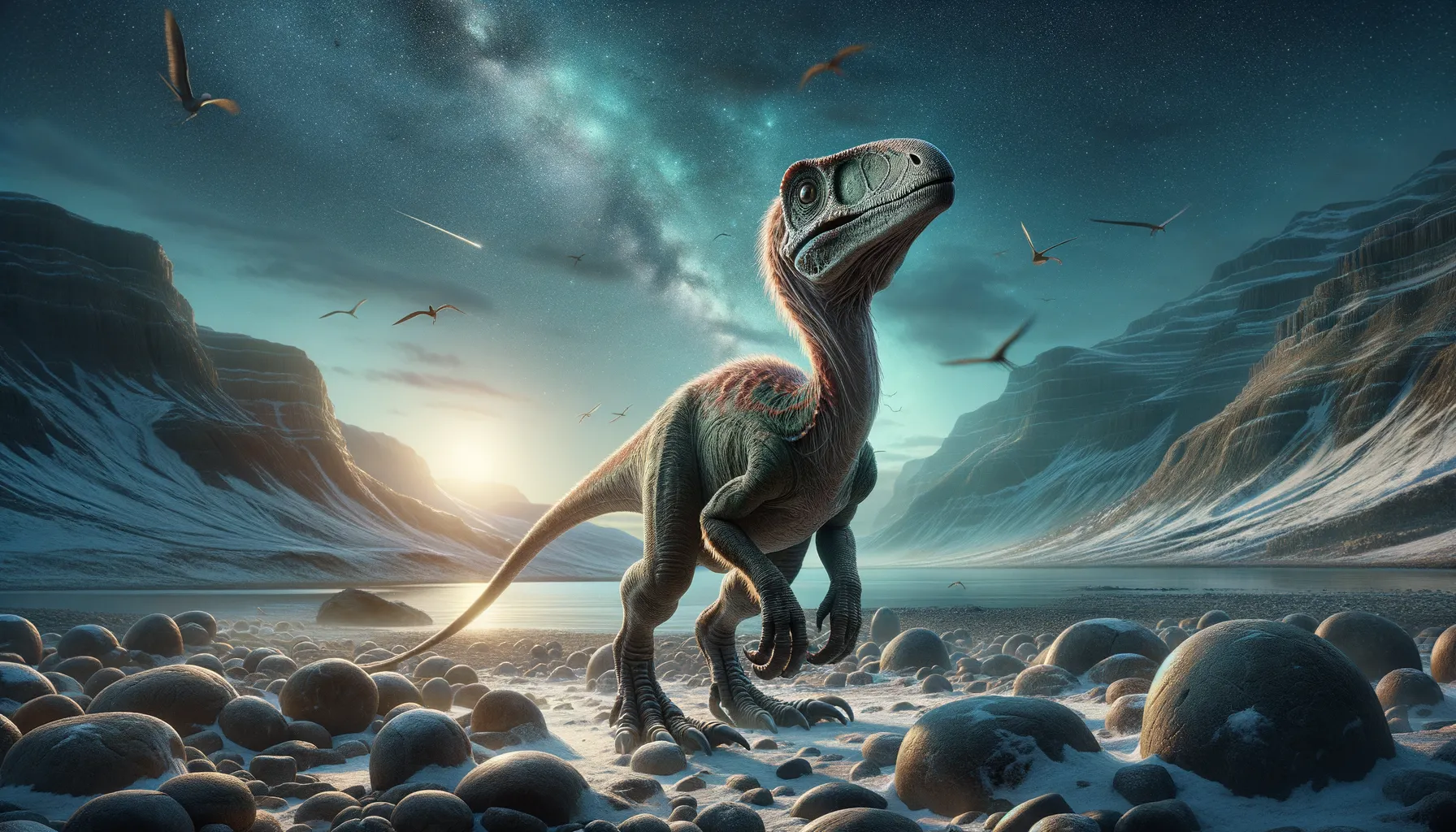
Conchoraptor
Compact creature with a curious crest.
Period
Cretaceous
Length
Approximately 2 meters (6.6 feet) long.
Height
Around 1 meter (3.3 feet) tall.
Weight
Approximately 40 kg (88 lbs).
Conchoraptor was a small, bird-like dinosaur that lived during the Late Cretaceous period. Part of the oviraptorid group, it is known for its skull shape, which suggests an adaptation for a specialized diet. Although it lacked teeth, Conchoraptor likely had a highly developed beak, allowing it to process different types of food. Discovered in Mongolia, its remains have provided valuable insights into the evolution of oviraptorids.
Diet
Conchoraptor's diet likely included hard-shelled items such as eggs or mollusks. Its beak was well-suited for cracking open shells to access the nutrients inside.
Hunting
This dinosaur was not a hunter in the traditional sense. Instead of chasing prey, it likely foraged for food, using its beak to access protected food sources.
Environmental challenges
Living in a semi-arid environment, Conchoraptor faced challenges like finding sufficient food and water. Seasonal changes would have influenced its food availability, forcing it to adapt its foraging strategies. Competition with other dinosaurs for resources was another challenge. Its relatively small size may have made it vulnerable to predators.
Speed
Relatively agile for its size, capable of quick bursts.
Lifespan
Estimated to live around 15 to 20 years.
First discovery
First discovered in Mongolia in the 1980s.
Fun Facts
- Conchoraptor was a small, feathered dinosaur that lived about 70 million years ago during the Late Cretaceous period.
- Despite its name, which means 'shell thief,' Conchoraptor's diet likely included more than just mollusks; it might have been an omnivore.
- It was discovered in the Djadokhta Formation of Mongolia, an area known for its rich fossil beds.
- Conchoraptor was closely related to Oviraptor and had a similar beak, which suggests they might have had similar feeding habits.
- This dinosaur was relatively small, measuring around 6 feet (1.8 meters) in length, making it one of the more petite members of its family.
- Scientists believe Conchoraptor had feathers, which could mean it had a colorful appearance, adding to its unique look.
Growth and Development
Conchoraptors likely hatched from eggs and experienced rapid growth during their early years. They needed to grow quickly to avoid predation and to become efficient foragers. Physical characteristics, such as their beaks, developed early to help them in accessing various food sources. Juveniles might have stayed in close-knit groups for protection and learning.
Habitat
Conchoraptor lived in the arid to semi-arid regions of what is now Mongolia. These areas were characterized by sparse vegetation, with cyclical wet and dry seasons. The presence of rivers and streams would have been crucial for survival. The landscape likely included open plains and some rocky outcrops.
Interaction with other species
Conchoraptor shared its environment with various other dinosaurs and animals. It might have competed with other oviraptorids for food resources. Interaction with predators, whether through evasion or defensive behaviors, was likely. In terms of commensalism, its foraging habits could unintentionally benefit scavengers by exposing additional food sources.
Natural lifespan
Conchoraptors probably lived for about 15 to 20 years.
Reproduction
Conchoraptor reproduced by laying eggs, nesting in protected areas. Parental care might have been a factor, with adults possibly guarding the nests. Clutches would include several eggs to increase the chances of offspring survival. Like modern birds, juveniles could have been precocial, requiring some degree of parental guidance.
Social behaviour
Conchoraptors might have been social creatures, forming small groups for protection and foraging efficiency. Group living could afford better protection against predators. Communication among individuals might have included visual displays and vocalizations. Social bonds could help in sharing information about food sources.
Fossil locations
Fossils of Conchoraptor have been primarily found in Mongolia, specifically in the Djadokhta Formation. These locations are rich in Late Cretaceous period fossils, offering insight into desert-like climates of that era. The fossil record helps to fill gaps regarding the diversity of oviraptorids in Asia. Excavations continue to uncover more specimens, broadening our understanding of their ecology and evolution.
